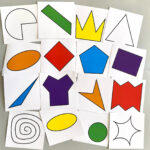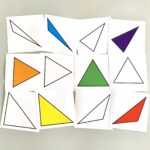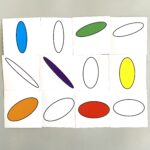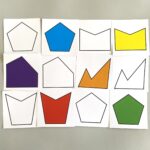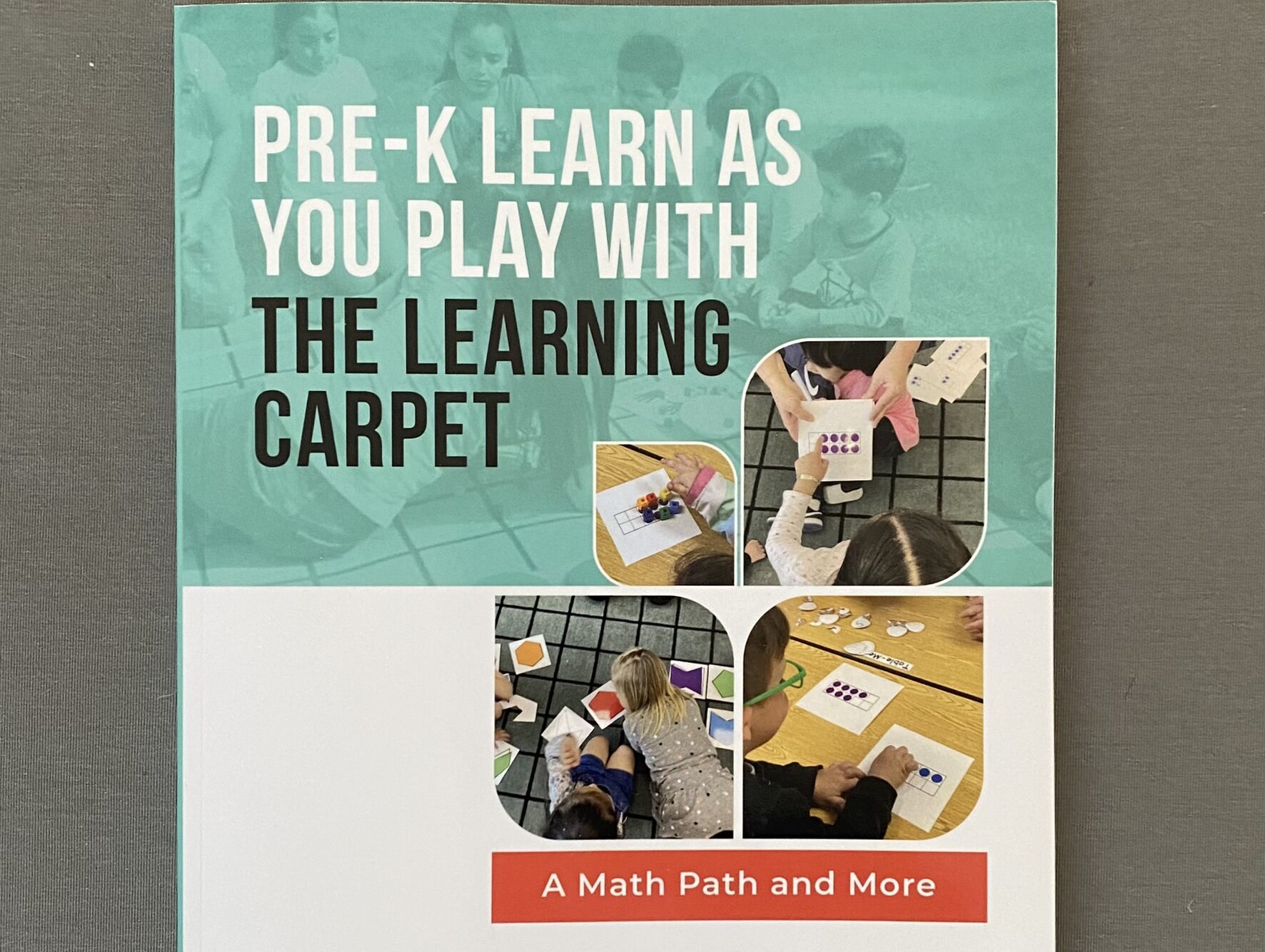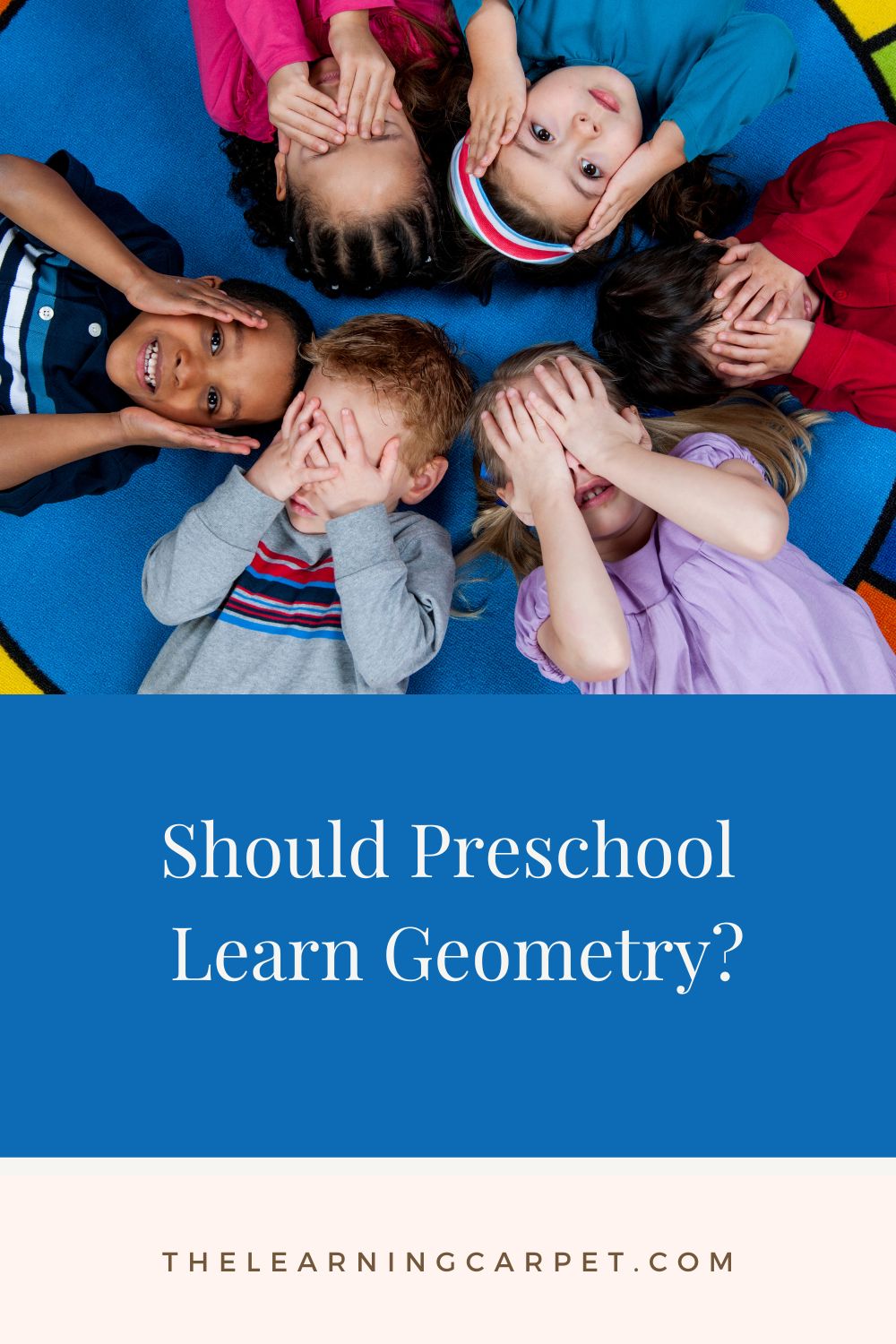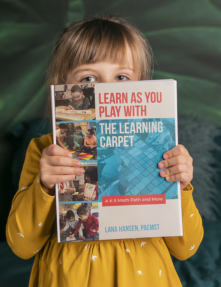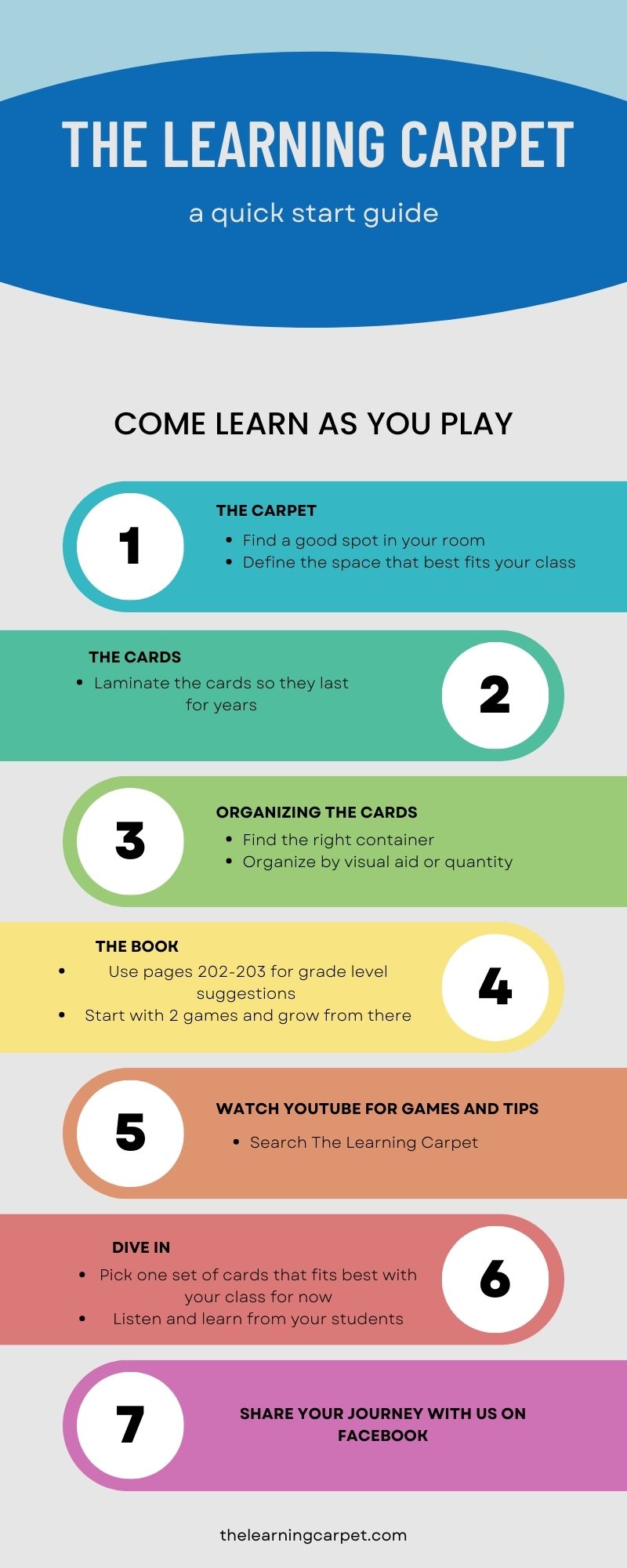The traditional view of geometry often involves labeling one version of a simple shape in preschool, but The Learning Carpet takes a different approach.
The Learning Carpet tools focus on helping children explore, classify, and discover foundational understandings that build strong spatial reasoning skills. This sets the stage for future success in school and life.
Preschoolers often struggle with the difference between a side and a corner. The Learning Carpet cards provide visual models that allow them to slide down each side and pinch each corner to clear up this common misconception.
Visual Models
Cubes can also be used to mark each side or corner and then be counted. Discovering that a shape has the same number of sides as it has corners is a big idea that deepens the understanding of merely calling a shape by the name the teacher gave. YouTube Video Here
Preschoolers start thinking about shapes as they link them to items from their world. For example, when seeing a rectangle, a child might exclaim that it looks like a door.
This critical steps allows educators to take the child’s language and connect it to the more formal label. A simple response of “You are right! That rectangle looks like a door” honors the child’s thinking while presenting the appropriate vocabulary.
Children will build deeper understanding if we link what they already understand and can describe to the attributes and basic properties that make each shape special.
Connections
Identifying common shapes like triangles, circles, squares, and rectangles are listed in all ECE standards, but children can go beyond mere memorization. Let’s take one shape, say the triangle, and expand on deeper understanding that can be cultivated.
Each child needs to discover that a triangle’s favorite number is three because it has three sides and three corners or vertices. Triangles come in many shapes and sizes. They can be big or little, skinny or fat, matchy-matchy (symmetrical) or extremely lopsided. Triangles can also be printed on a page in several ways, but no matter how the shape is presented, it’s still a triangle.
Classroom Example
Recently, I was modeling a lesson in a preschool classroom and held up a right triangle for discussion. The children quickly shouted the correct term when the longest side was positioned horizontally to the floor.
However, when I rotated the shape, the children decided it was no longer a triangle and should now be called a slide. We rotated the shape several times and the group decided we needed more think time.
I didn’t intervene and give the answer that a shape’s name doesn’t change regardless of how it is presented because it would have stopped the thinking. Instead, I gave this super group a question to think about, explore and discover. This type of work engages and expands foundational geometric reasoning.
Super Shapes
Sorting multiple shapes by the number of sides or corners is a great way to sneak more geometry into the math plan. Children can classify a variety of triangles, quadrilaterals, pentagons, hexagons, etc., without getting nervous about the formal names of each shape.
Preschoolers can count the sides and use another visual tool (dice dots, finger patterns, or numerals from our Structure Set) as labels. Have the children use the language of “five-sider” or “a shape with five corners” to classify and save the fancy math terms for later.
The Learning Carpet Super Shapes Set contains 220 cards filled with the variety needed to encourage geometric understanding. There are 100 different examples of circles, ellipses (ovals), and polygons from triangles through decagons and their matching outline card. The remaining 20 cards show open figures and closed figures to support the rules and properties of polygons.
Beyond shape recognition, the cards provide opportunities for authentic measurement activities using non-standard units. They also serve as models and children can use other tools like Exploragons or chenille stems to create them.
Interactive Games
Two examples of these interactive learning games are “What’s My Rule,” a preschool math game showcasing how easy it is to classify based on an attribute, and “Shape Puzzles,” demonstrating how color-filled shapes and matching outline shapes challenge young learners to understand the attributes of each shape.
By incorporating diverse representations, interactive games, and real-life applications, we empower children to explore the world of geometry with curiosity and confidence.
Watch “Shape Puzzles” to see how easy the color filled shapes and the matching outline shapes challenge young learners to understand the attributes of each shape. These shapes are perfect for measuring, too.

